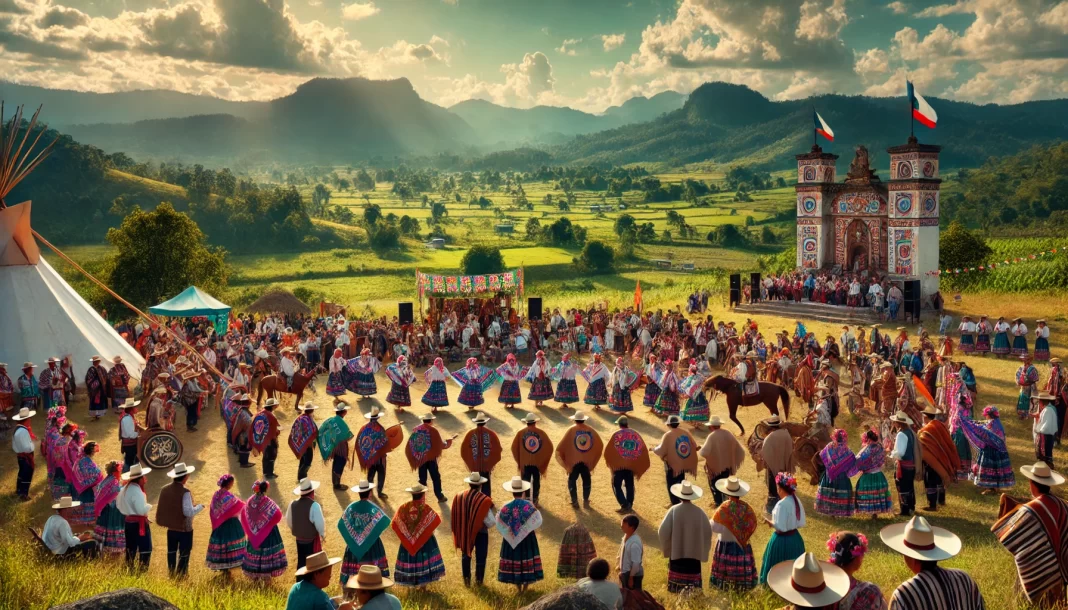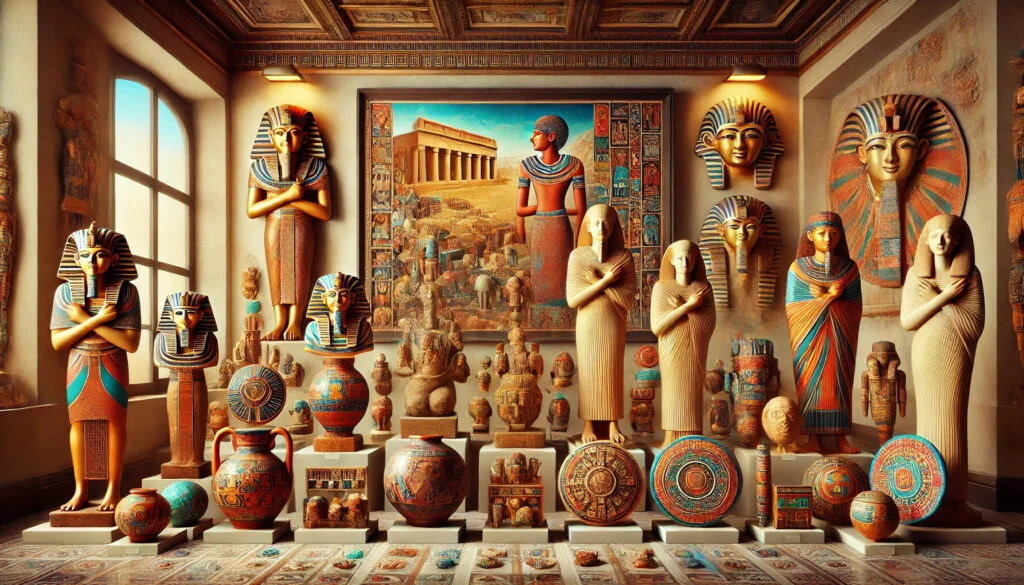Life style
Wutzitooyaa: Unveiling a New Wave of Innovation
Published
1 month agoon
By
Harry
In today’s rapidly Wutzitooyaa evolving technological landscape, innovation is the key driver of progress. One name that has recently sparked interest across industries is Wutzitooyaa. This groundbreaking concept is reshaping how we think about technological advancements, pushing the boundaries of creativity, efficiency, and sustainability. In this article, we will dive deep into the origins, applications, and potential of Wutzi tooyaa, a phenomenon poised to become the next big thing in the world of technology.
What is Wutzitooyaa?
Wutzitooyaa is a revolutionary concept at the intersection of artificial intelligence, automation, and innovative design. It represents a new paradigm in how we approach technological solutions, emphasizing not only high functionality but also adaptability to a wide range of sectors. At its core, Wutzitooyaa aims to make systems smarter, faster, and more intuitive, enabling businesses and individuals to leverage technology in unprecedented ways.
This new wave of innovation is built on three foundational pillars:
- Artificial Intelligence (AI): Advanced AI algorithms form the backbone of Wutzi tooyaa, allowing for more efficient processing of data and decision-making.
- Automation: By automating complex tasks, Wutzitooyaa helps reduce human error and increase productivity.
- Innovative Design: Wutzitooyaa incorporates user-centric designs that ensure technology is easy to use, aesthetically pleasing, and functionally superior.
The Key Components of Wutzitooyaa
Artificial Intelligence-Driven Insights
One of the standout features of Wutzi tooyaa is its AI-powered analytics. This allows for real-time processing of data, which can generate actionable insights at lightning speed. Businesses that implement Wutzitooyaa can expect to see improvements in areas such as:
- Predictive analytics: Forecasting market trends and customer behaviors with greater accuracy.
- Process optimization: Streamlining operations by identifying bottlenecks and suggesting improvements.
- Personalized experiences: Tailoring products and services to meet the unique needs of individual customers.
By utilizing AI-driven insights, companies can stay ahead of the competition, adapt to market changes more effectively, and deliver superior customer experiences.
Automation at Scale
Wutzitooyaa brings automation to the forefront of innovation, enabling businesses to scale their operations effortlessly. Through its sophisticated algorithms, Wutzi tooyaa automates tasks that once required human intervention, leading to increased efficiency and reduced operational costs.
For instance, industries such as manufacturing, logistics, and customer service can benefit greatly from Wutzitooyaa’s automation capabilities. Tasks such as inventory management, supply chain coordination, and customer support inquiries can all be automated, freeing up valuable human resources to focus on more strategic initiatives.
Innovative Design for Seamless Integration
Another crucial aspect of Wutzitooyaa is its emphasis on design thinking. The concept places a high priority on user experience, ensuring that technological solutions are not only functional but also easy to implement and integrate with existing systems.
For example, in the healthcare industry, Wutzi tooyaa’s innovative design could facilitate the seamless integration of AI-driven diagnostic tools into hospitals and clinics. These tools can analyze patient data in real-time, providing healthcare professionals with critical insights to make more informed decisions, ultimately leading to better patient outcomes.
Applications of Wutzitooyaa Across Industries
Healthcare
The healthcare sector stands to gain immensely from Wutzitooyaa’s advanced technologies. By integrating AI and automation, hospitals can provide faster and more accurate diagnoses, streamline administrative tasks, and enhance patient care. For instance, AI-powered diagnostic tools can analyze medical images with greater accuracy, reducing human error and improving the early detection of diseases.
Additionally, Wutzitooyaa can be used to develop personalized treatment plans by analyzing a patient’s medical history and genetic makeup, leading to better healthcare outcomes and a more efficient system overall.
Manufacturing
In manufacturing, Wutzi tooyaa has the potential to revolutionize production processes. By automating routine tasks and using AI to optimize workflows, manufacturers can increase productivity while reducing waste. This not only lowers costs but also supports more sustainable production practices, a critical concern in today’s climate-conscious world.
Moreover, Wutzitooyaa can be applied to predictive maintenance, where AI systems monitor machinery in real-time, identifying potential issues before they cause significant disruptions. This leads to less downtime, fewer repairs, and a smoother production cycle.
Retail
The retail industry is undergoing a transformation with the rise of e-commerce, and Wutzitooyaa is at the forefront of this change. By harnessing the power of AI, retailers can offer personalized shopping experiences, analyzing customer data to recommend products that align with individual preferences and behaviors.
Furthermore, Wutzi tooyaa can automate inventory management, ensuring that products are always in stock and available when customers need them. This not only improves customer satisfaction but also boosts profitability by minimizing lost sales and reducing excess inventory.
Finance
The financial sector is also embracing the Wutzitooyaa revolution. Banks and financial institutions can utilize AI to detect fraud, automate transaction processes, and provide more personalized services to their clients. For instance, AI-powered chatbots can assist customers with routine inquiries, freeing up human agents to focus on more complex tasks.
Additionally, Wutzitooyaa can be used to analyze market trends, enabling financial analysts to make more informed investment decisions, ultimately improving returns for investors.
The Future of Wutzitooyaa
As Wutzitooyaa continues to evolve, its applications will only expand across different industries. Its potential to enhance productivity, improve customer experiences, and reduce costs makes it a valuable asset for businesses looking to stay competitive in the digital age.
Moreover, as AI and automation technologies continue to advance, we can expect Wutzitooyaa to integrate with emerging fields such as blockchain and quantum computing, opening up even more possibilities for innovation.
In the years to come, Wutzi tooyaa is expected to drive the next wave of technological breakthroughs, reshaping the way we live, work, and interact with the world around us.
Conclusion
Wutzitooyaa is more than just a buzzword—it’s a transformative force that is set to redefine industries across the globe. By leveraging the power of AI, automation, and innovative design, Wutzitooyaa empowers businesses to streamline their operations, enhance customer satisfaction, and drive growth in new and exciting ways.
As we look to the future, it’s clear that Wutzitooyaa will play a pivotal role in shaping the next generation of technological solutions, making it an essential concept for forward-thinking organizations to embrace.
You may like
Life style
Understanding the Essence of Ciulioneros: Lithuania’s Traditional Attire
Published
2 weeks agoon
November 10, 2024By
Rocklord
Lithuanian culture is a tapestry of unique customs, folklore, and traditions, with each region offering its distinctive cultural artifacts. Among the most cherished aspects of Lithuanian heritage is the traditional clothing known as ciulioneros. Often worn during national celebrations and cultural festivals, ciulioneros attire not only reflects regional pride but also tells a story of history, heritage, and symbolism. This article dives deep into the origins, design, cultural meaning, and modern-day relevance of ciulioneros, illuminating its role in preserving Lithuanian identity.
The Origins of Ciulioneros
Ciulioneros has roots that date back centuries, embodying the agrarian and folk traditions of Lithuania. Each element of ciulioneros reflects the region’s geography, climate, and rural lifestyles. This attire was once reserved for significant occasions, religious gatherings, and rites of passage, and its elaborate design often signified a person’s place within society. Over the centuries, ciulioneros became intertwined with Lithuanian identity, celebrating the nation’s unity and the shared values that have persisted despite historical upheavals.
Traditional Components of Ciulioneros
Fabrics and Materials
Ciulioneros clothing traditionally uses natural materials such as wool, linen, and sometimes hemp, with each fabric chosen to reflect the seasonal and practical needs of Lithuanian life. Linen, for instance, was favored for summer attire due to its lightweight and breathable qualities, while wool provided warmth during the cold winter months. The use of these materials highlights a harmony with nature, with fabrics sourced locally and dyed using natural pigments.
Symbolic Embroidery and Patterns
The most striking feature of ciulioneros is its intricate embroidery and patterns, each carrying deep cultural symbolism. Designs often include motifs like the aukso verps (golden spindle) and gyvybės medis (tree of life), representing fertility, growth, and the connection between life and the divine. Patterns were often passed down through generations, with specific designs associated with certain families or regions, adding a layer of personal identity to the attire.
Headwear and Accessories
No ciulioneros outfit is complete without its unique headwear and accessories. For women, headscarves or wreaths made of flowers or herbs add a soft yet traditional touch. Married women traditionally wore elaborate bonnets, while unmarried women and young girls would wear floral wreaths, symbolizing innocence and youth. Men’s headwear, often caps made from felt, conveyed regional styles and individual status, particularly in rural communities.
Colors and Their Cultural Significance
Colors play a central role in ciulioneros, with each hue carrying specific meanings tied to Lithuanian folklore and beliefs. Red, for instance, signifies life and vitality, while green represents growth and harmony with nature. Blue is often associated with spirituality and the connection between earth and sky. These colors are not chosen randomly; instead, they serve to protect the wearer, offer blessings, and connect individuals with their ancestors.
The Symbolism Behind Ciulioneros
An Expression of Heritage
Ciulioneros is more than just clothing; it is an expression of Lithuanian heritage that serves as a symbol of national pride. Each design and accessory captures Lithuania’s agricultural lifestyle, ancient belief systems, and resilience as a culture. Wearing ciulioneros has become an act of honoring ancestors and celebrating the nation’s folklore.
Connection to Lithuanian Mythology
Elements of ciulioneros also resonate with Lithuanian mythology. Designs often incorporate symbols that represent the Lithuanian gods, goddess, and other mythological figures. By wearing these symbols, Lithuanians believe they can carry the strength, wisdom, or protection of these ancient figures with them.
Ciulioneros in Modern Lithuanian Culture
A Revival of Tradition in Contemporary Times
In recent decades, there has been a resurgence of interest in ciulioneros, as Lithuanians look to reconnect with their roots. This revival can be seen in national festivals, weddings, and special events where ciulioneros is often worn to showcase pride in Lithuanian heritage. Furthermore, artists and fashion designers are drawing inspiration from ciulioneros, incorporating its patterns and designs into modern clothing.
Ciulioneros in Lithuanian Diaspora Communities
For Lithuanians living abroad, ciulioneros represents a tangible connection to their homeland. Festivals held by Lithuanian communities worldwide often feature ciulioneros, allowing diaspora members to share their culture with others and keep traditional Lithuanian customs alive across generations.
Preserving Ciulioneros for Future Generations
Organizations dedicated to Lithuanian heritage have recognized the importance of preserving ciulioneros by educating younger generations about its history and craftsmanship. These efforts include workshops, exhibitions, and online resources that teach about the history and the making of ciulioneros. By sharing these stories and practices, Lithuanian communities hope to pass down the meaning and beauty of ciulioneros.
FAQs
What is ciulioneros?
Ciulioneros is traditional Lithuanian clothing featuring intricate embroidery, symbolic patterns, and natural materials like wool and linen. It reflects Lithuania’s cultural heritage and is often worn at national celebrations and festivals.
Why is ciulioneros important to Lithuanian culture?
Ciulioneros represents Lithuania’s heritage, symbolizing unity, history, and identity. The attire’s designs often reflect regional pride, Lithuanian mythology, and symbols that connect people to their ancestors.
What materials are used in ciulioneros?
Ciulioneros is typically made from natural materials such as linen, wool, and sometimes hemp. These materials were chosen for their comfort, practicality, and harmony with Lithuania’s natural environment.
What is the meaning of the patterns in ciulioneros?
Patterns in ciulioneros often carry symbolic meanings related to Lithuanian folklore and spirituality. For example, the “tree of life” design represents growth and connection, while floral and geometric patterns are seen as blessings for health, prosperity, and protection.
Is ciulioneros still worn today?
Yes, ciulioneros has seen a revival and is still worn today during Lithuanian festivals, weddings, and other cultural celebrations. It has also gained popularity among Lithuanians abroad as a symbol of cultural pride.
Can non-Lithuanians wear ciulioneros?
While ciulioneros is deeply rooted in Lithuanian culture, wearing it with respect and appreciation is encouraged by many Lithuanians, especially at cultural events or festivals celebrating Lithuanian heritage. It’s seen as a way to honor and share the beauty of Lithuanian traditions.
Conclusion
Ciulioneros embodies the spirit of Lithuanian culture, uniting past and present through every stitch, color, and pattern. This traditional attire remains a cherished symbol, preserving Lithuanian heritage, beliefs, and values in an ever-modernizing world. With ciulioneros becoming more accessible and celebrated in Lithuania and beyond, its vibrant patterns and cultural richness continue to capture the imagination of those who appreciate the profound beauty of heritage attire.
Life style
The Allure of Ancient Art: A Journey Through Humanity’s Earliest Creations
Published
2 weeks agoon
November 7, 2024By
Rocklord
The story of ancient art is as vast and varied as human history itself. Ancient art takes us back to a time when people used the world around them as their canvas, painting on cave walls, molding clay, or chiseling stone to express their existence, beliefs, and dreams. This early form of art holds clues to humanity’s most ancient thoughts, emotions, and ways of life. Despite the simplicity of tools available, early humans exhibited remarkable creativity, laying the groundwork for artistic traditions that span across continents and centuries.
Ancient art offers us a window into cultural practices, spiritual beliefs, and societal structures that define our common history. As we uncover these artworks, the findings speak volumes about how deeply rooted our need for expression and identity is. Let’s dive into the depths of ancient art and examine its far-reaching impact on history, culture, and the ways we still view art today.
What is Ancient Art?
Ancient art encompasses all forms of art produced in early civilizations across different periods, typically spanning from the Upper Paleolithic period (approximately 40,000 years ago) to the early centuries of the Common Era. The scope of ancient art includes cave paintings, sculptures, pottery, textiles, metalwork, and other mediums that capture early human creativity.
These artistic creations vary greatly in purpose and style. Many were created for spiritual and ritualistic purposes, while others served as documentation of daily life. The tools and techniques employed also varied widely depending on the geographical location, available resources, and cultural context. Despite these differences, ancient art shares a common goal of communicating and preserving stories, emotions, and beliefs.
The Origins of Art in the Paleolithic Period
One of the oldest forms of human art can be traced back to the Paleolithic period, where early humans first ventured into visual expression. The iconic cave paintings in Lascaux, France, and Altamira, Spain, feature scenes of animals, human figures, and geometric designs. The pigments were often made from ground minerals like iron oxide, creating striking red and ochre tones that remain visible today.
Paleolithic art often reflected aspects of survival, such as hunting scenes, which suggest its importance as a ritualistic tool. Experts theorize that these images may have been painted as part of hunting rituals or as a way to manifest successful hunts. The materials used were basic yet innovative: natural pigments mixed with animal fat or saliva and applied with fingers, brushes made of animal hair, or even hollow bones for spray painting. These techniques not only highlight the adaptability of early humans but also provide insight into their connection with nature.
Art of the Neolithic Era
With the advent of the Neolithic period came a transition from hunter-gatherer societies to settled agricultural communities, leading to notable changes in artistic expression. As people developed farming, they also created more permanent art forms, often tied to practical objects like pottery and tools. Unlike Paleolithic cave art, Neolithic art incorporated geometric patterns and symbolic designs, often with a greater emphasis on the human figure and depictions of community life.
Pottery from this period, especially in regions like the Middle East, was decorated with elaborate patterns, showing not just utility but an appreciation for aesthetic detail. Clay figurines also became popular, often symbolizing fertility and nature, reflecting the spiritual and cultural shifts of the time.
Ancient Egyptian Art
Ancient Egypt is one of the most recognized cultures for its distinct art, which includes monumental architecture, intricate jewelry, and vivid paintings. Egyptian art is characterized by its strict adherence to a set of artistic conventions and symbolism, often featuring deities, pharaohs, and scenes of the afterlife.
The art was created not merely for decoration but to serve a spiritual purpose—each statue, painting, or hieroglyphic text was carefully crafted to ensure the deceased’s journey to the afterlife was successful. From the Great Pyramids and the Sphinx to elaborate tomb paintings in the Valley of the Kings, Egyptian art emphasizes balance, symmetry, and divine order.
Mesopotamian Art: The Birth of Civilization
The cradle of civilization, Mesopotamia, is known for its remarkable artistic achievements. Art from this region, including sculptures, pottery, and relief carvings, often depicts gods, kings, and scenes of conquest. The art reflects the complex hierarchy and religious practices of Mesopotamian societies.
Artifacts such as the Code of Hammurabi, an ancient legal text inscribed on a stone stele, are as much art as they are historical documents, illustrating the relationship between law, power, and artistry. Mesopotamian ziggurats, the massive structures that served as temples, are another testament to the architectural ingenuity and religious devotion of this ancient culture.
Art of the Indus Valley Civilization
The Indus Valley civilization, spanning modern-day Pakistan and northwest India, left behind impressive art forms, from detailed pottery to intricately carved seals and statues. The seals, often featuring animals and mythical beings, suggest a sophisticated society with a symbolic language that may have held both economic and spiritual importance. The terra cotta figurines found in Harappa and Mohenjo-Daro, as well as the infamous bronze statuette of the Dancing Girl, highlight the culture’s appreciation for human beauty and skill.
Ancient Chinese Art and Calligraphy
Ancient China’s artistic legacy is rich and multifaceted, encompassing calligraphy, pottery, jade carvings, and bronze casting. The development of calligraphy, seen as a reflection of one’s moral integrity, became an esteemed art form with deep philosophical and spiritual significance. From the Zhou Dynasty’s intricate bronzeware to the Qin Dynasty’s Terracotta Army, Chinese art showcased advanced techniques and a focus on harmony, nature, and respect for ancestors.
The Art of the Mayans and Mesoamerican Cultures
In Mesoamerica, the Mayans, Aztecs, and Olmecs developed complex societies marked by remarkable artistic achievements. Mayan art, seen in temple reliefs, pottery, and wall paintings, often depicted elaborate rituals, gods, and cosmology. The Maya were especially skilled in creating large stone sculptures that narrate the lives of their kings and gods. Aztec art, known for its dramatic representations of their gods, emphasizes the role of ritual and sacrifice in their society.
Greek Art: Sculpting the Human Form
The Greeks mastered the art of sculpture, producing some of history’s most celebrated statues. Greek art evolved from the rigid forms of the Archaic period to the fluid, lifelike expressions of the Classical and Hellenistic periods. Artists like Phidias and Praxiteles created sculptures that celebrated human beauty and movement, with works like the Venus de Milo and the Winged Victory of Samothrace. Greek art’s influence on Western aesthetics, especially its emphasis on proportion and idealized human forms, is immense.
Roman Art and Architectural Innovations
The Romans built upon Greek art traditions, creating works that were both grand and practical. Roman art focused on realism and often depicted emperors, battles, and everyday life with remarkable detail. They excelled in engineering as well, constructing iconic structures like the Colosseum and aqueducts, which showcase their skill in blending functionality with artistic flair.
Ancient African Art
African art, particularly rock art from the Sahara and ancient sculptures, tells a rich story of cultural identity, spirituality, and history. From the rock engravings of the San people to the sculptures of the Nok civilization, African art has a unique aesthetic and symbolic value. Masks and statues in African societies often played an essential role in rituals and storytelling, serving as conduits between the physical and spiritual worlds.
Conclusion
Ancient art reveals the creative expressions, beliefs, and lifestyles of our ancestors. Through each artwork, whether it’s a cave painting, a stone sculpture, or a carved seal, we gain insight into the minds of early humans and their relationship with the world around them. These creations laid the foundation for artistic traditions that continue to influence modern art, affirming the timeless nature of human creativity and the desire to leave a mark on the world.
FAQs
What is considered ancient art?
Ancient art typically refers to art created from the Paleolithic period (around 40,000 years ago) up to the early centuries of the Common Era. It includes a wide range of forms like cave paintings, sculptures, pottery, and early architecture created by early civilizations such as the Egyptians, Greeks, Romans, Mesopotamians, and Mayans.
Why did early humans create art?
Early humans created art for various reasons, including ritualistic or religious purposes, storytelling, and as a means to express their understanding of the world. Many ancient art pieces, like cave paintings and statues, reflect a connection to nature, spirituality, and social hierarchy, indicating that art was often intertwined with culture, spirituality, and survival.
What are some examples of famous ancient art?
Some well-known examples include the cave paintings at Lascaux in France, the Pyramids of Giza in Egypt, the sculptures of the Parthenon in Greece, the Terracotta Army in China, and the stone statues on Easter Island. These works continue to captivate people with their scale, intricacy, and historical significance.
How was ancient art preserved for so long?
Ancient art has been preserved through natural means (such as burial, dry climates, and sealed tombs) as well as through archaeological efforts that excavate, conserve, and restore art pieces. Certain materials like stone, clay, and metals have proven to be more durable, preserving their form and details over thousands of years.
What tools did ancient artists use?
Ancient artists used tools made from natural materials such as stone, bone, wood, and metal. For painting, they used pigments made from minerals, charcoal, and even animal fats, which they applied with hands, brushes, or simple tools. Carving tools, chisels, and early metalworking tools were also essential, particularly in later civilizations.
How did ancient art influence modern art?
Ancient art has had a profound influence on modern art, especially during the Renaissance, when artists sought to rediscover and replicate the techniques and ideals of ancient Greek and Roman art. Ancient themes, styles, and symbolism continue to inspire artists today, and many contemporary art movements, such as primitivism, look to ancient art for its simplicity, raw expression, and cultural depth.
Life style
Andre A. Hakkak: Insights into a Visionary in Private Credit Investments
Published
3 weeks agoon
October 29, 2024By
Rocklord
Andre A. Hakkak, a prominent name in the world of private credit, has garnered significant respect and influence within the financial sector. As the co-founder and CEO of White Oak Global Advisors, Hakkak has helped steer his firm to become a leading player in the alternative investment space, specializing in direct lending and structured finance solutions. With a career rooted in innovation and foresight, Hakkak has played a crucial role in shaping private credit markets, facilitating economic growth, and creating new financing avenues for middle-market companies.
This article delves into Andre A. Hakkak’s background, his investment philosophy, and his impact on the financial landscape through his role at White Oak Global Advisors. By examining his contributions, we gain insight into how Hakkak’s strategic vision has helped businesses access essential capital, driving industry growth and shaping the alternative investment market.
Background of Andre A. Hakkak
Andre A. Hakkak has a wealth of experience in private credit and finance, having navigated multiple facets of the industry over several decades. Educated in both business and finance, Hakkak’s background is marked by an early focus on identifying non-traditional lending opportunities and finding innovative ways to support businesses. This vision led him to co-found White Oak Global Advisors, which has become a leader in providing tailored credit solutions across various sectors.
Hakkak’s experience spans multiple economic cycles, giving him a deep understanding of credit risks and opportunities in diverse market conditions. His leadership at White Oak has been instrumental in developing a portfolio that supports middle-market companies, a traditionally underserved segment in terms of capital availability.
The Genesis of White Oak Global Advisors
In 2007, Andre A. Hakkak co-founded White Oak Global Advisors alongside co-founders who shared his vision of building a platform dedicated to private credit solutions. The firm was established with the goal of helping small to mid-sized businesses access the financing needed to grow, innovate, and succeed. White Oak provides a range of credit solutions, including direct lending, structured finance, and asset-backed lending, positioning itself as a trusted partner for businesses seeking flexible, customized funding options.
White Oak Global Advisors stands out by focusing on sectors often overlooked by traditional financial institutions, such as healthcare, manufacturing, and consumer services. Under Hakkak’s leadership, the firm has built an impressive portfolio that has consistently delivered strong performance for investors while supporting the growth of businesses across the United States and beyond.
Andre A. Hakkak’s Investment Philosophy
Hakkak’s approach to investment emphasizes risk management, thorough due diligence, and a keen eye for undercapitalized opportunities. His philosophy rests on the belief that middle-market companies are critical drivers of economic growth but are often underserved by traditional banks. By providing these companies with tailored financial solutions, Hakkak and his team can address a significant gap in the market, supporting economic development while offering attractive returns to investors.
Central to Hakkak’s philosophy is the commitment to understanding each business’s unique financial needs. This approach enables White Oak to offer bespoke lending solutions that align with the borrower’s goals, fostering long-term partnerships built on mutual success.
White Oak’s Impact on the Private Credit Market
The private credit market has expanded rapidly over the past decade, largely due to increased demand from companies seeking alternatives to traditional bank loans. Under Andre Hakkak’s leadership, White Oak Global Advisors has been at the forefront of this growth. The firm’s focus on direct lending allows it to deliver capital more efficiently than many traditional banks, while its expertise in structured finance solutions enables it to address a wide range of client needs.
White Oak’s impact is evident in its extensive portfolio of investments across numerous industries. By targeting middle-market companies, White Oak helps bridge the financing gap left by larger financial institutions, enabling these companies to expand, innovate, and compete effectively in their respective markets.
The Growth of Direct Lending and White Oak’s Role
Direct lending has become a popular financing choice for businesses due to its flexibility, speed, and customizable structure. Unlike traditional loans, direct lending solutions can be tailored to meet specific business requirements, offering more adaptable repayment terms and access to funding on a quicker timeline.
White Oak Global Advisors, with Andre A. Hakkak at the helm, has excelled in the direct lending space. The firm’s success in providing reliable, timely capital has solidified its reputation as a leader in alternative financing. This approach has made White Oak an attractive partner for businesses that value efficiency and customization in their financing options.
Andre A. Hakkak’s Influence on Structured Finance
In addition to direct lending, Hakkak has significantly influenced structured finance—a complex area of finance that involves bundling loans or other debt instruments to reduce risk and increase funding opportunities. Through White Oak, Hakkak has helped develop structured finance solutions that meet the unique needs of clients, allowing businesses to leverage assets and gain access to capital that might otherwise be out of reach.
By employing innovative approaches to structured finance, Hakkak has enabled White Oak to expand its portfolio and serve a broader range of businesses. His contributions to this area have helped establish White Oak as a trusted leader in the alternative finance market.
Commitment to Sustainable Investing
Under Andre Hakkak’s leadership, White Oak Global Advisors has also focused on sustainable investing, incorporating environmental, social, and governance (ESG) principles into its investment approach. Recognizing the growing importance of sustainability in finance, Hakkak has championed initiatives that support responsible investment, enabling White Oak to attract investors who prioritize ethical considerations alongside financial returns.
White Oak’s commitment to sustainability is reflected in its investment decisions, as the firm seeks to fund businesses that align with positive social and environmental outcomes. This approach not only supports ethical business practices but also enhances long-term value for White Oak’s investors.
The Future of Private Credit and White Oak’s Vision
Looking ahead, Andre Hakkak remains optimistic about the potential for private credit to drive economic growth and innovation. As demand for non-bank lending solutions continues to rise, White Oak Global Advisors is well-positioned to expand its role in the industry. Hakkak’s vision for the future includes further diversification of White Oak’s investment offerings, with a focus on sectors that are ripe for growth and underfunded by traditional lenders.
Hakkak’s forward-thinking approach suggests that White Oak will continue to adapt to changing market conditions, providing essential capital solutions that meet the evolving needs of businesses. By staying true to his investment philosophy and commitment to risk management, Hakkak is setting White Oak up for sustained success in the years to come.
FAQs
Who is Andre A. Hakkak?
Andre A. Hakkak is the CEO and co-founder of White Oak Global Advisors, a leading private credit firm specializing in direct lending, structured finance, and asset-backed lending for middle-market companies.
What is White Oak Global Advisors?
White Oak Global Advisors is an investment firm founded by Andre Hakkak, focused on providing alternative financing solutions to middle-market companies, including direct lending, structured finance, and asset-backed lending.
What is Andre Hakkak’s investment philosophy?
Hakkak’s investment philosophy emphasizes risk management, thorough due diligence, and supporting middle-market companies through tailored financing solutions that address their unique needs.
How does White Oak contribute to private credit markets?
White Oak Global Advisors, led by Andre Hakkak, has significantly impacted private credit by providing non-traditional lending solutions to middle-market businesses, helping them grow and succeed where traditional banks may not.
What industries does White Oak serve?
White Oak serves a range of industries, including healthcare, manufacturing, and consumer services, focusing on sectors often underserved by traditional financial institutions.
How is White Oak involved in sustainable investing?
Under Hakkak’s leadership, White Oak integrates ESG principles into its investment strategy, supporting businesses that align with positive environmental and social outcomes.
Conclusion
Andre A. Hakkak has cemented his place as an influential leader in the world of private credit through his work with White Oak Global Advisors. His innovative approach to direct lending, structured finance, and sustainable investment has helped businesses access vital capital, fostering economic growth and supporting underserved markets. As the private credit industry continues to expand, Hakkak’s expertise and forward-thinking vision will undoubtedly shape the future of alternative finance.
White Oak’s impact under his leadership serves as a testament to the potential of private credit to transform industries, empower businesses, and drive progress in the financial sector. By championing a tailored, client-focused approach, Andre A. Hakkak is not only leading White Oak to new heights but also paving the way for sustainable, inclusive growth in finance.
Trending
-

 Blog1 month ago
Blog1 month agoBlogsterNation: A Thriving Hub for Bloggers Around the World
-

 Life style1 month ago
Life style1 month agoEnnuifans: A Platform That Embraces Aesthetic Boredom and Creativity
-

 Tech1 month ago
Tech1 month agoExploring the World of Gravity Internet: A Complete Guide
-

 News1 month ago
News1 month agoThe C.W. Park USC Lawsuit: A Deep Dive into the Legal Battle
-

 Tech1 month ago
Tech1 month agoDiscover Cyanová: The Vibrant Blue-Green Hue
-

 Tech1 month ago
Tech1 month agoNews Jotechgeeks: Revolutionizing How You Consume Tech News
-

 Health2 months ago
Health2 months agoKingymab: A Revolutionary Approach to Fitness and Wellness
-

 Life style2 months ago
Life style2 months agoThe Ice Cream Haircut: A Bold New Hair Trend with a Sweet Twist
